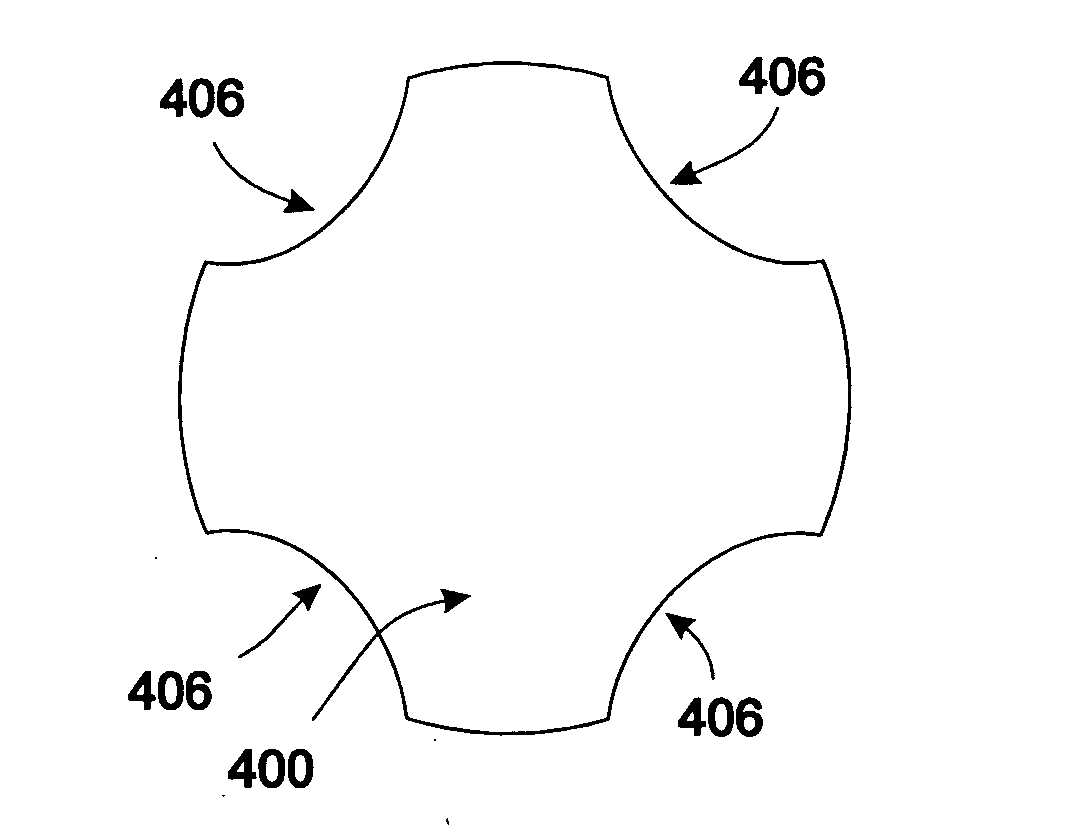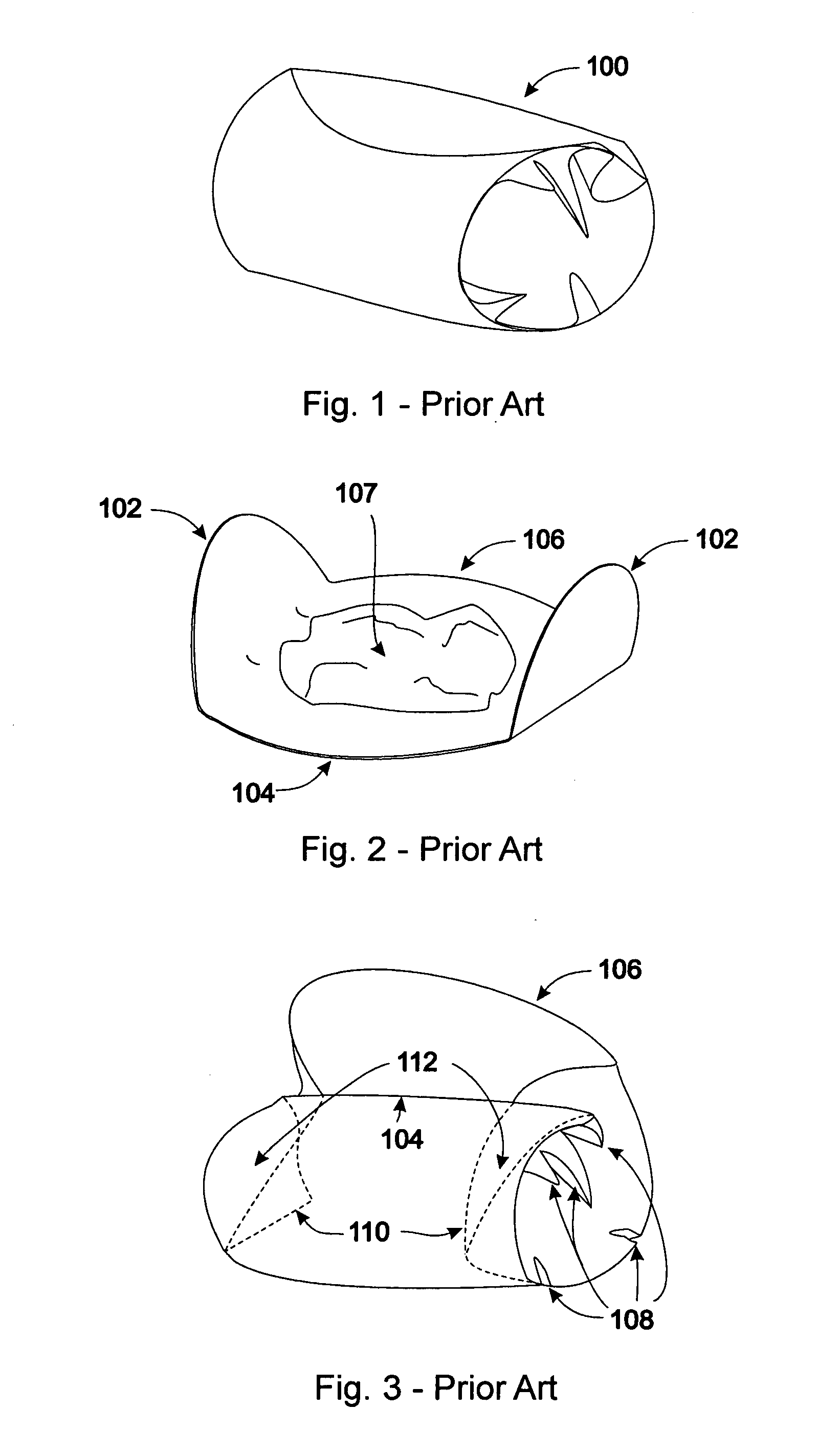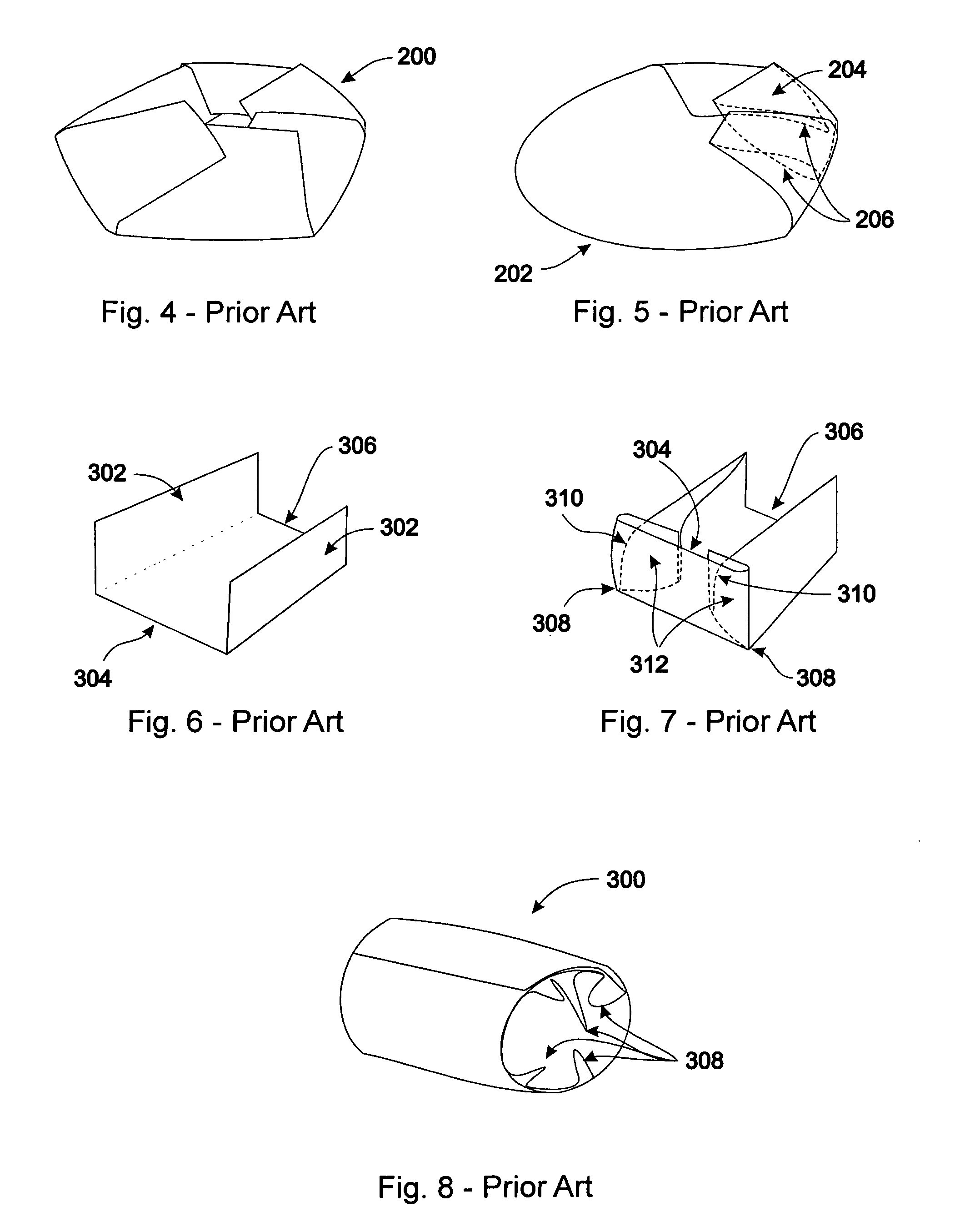Efficient food wraps
a food wrap and efficient technology, applied in baking, food science, baking products, etc., can solve the problems of reducing the functional value of the food wrap, reducing the efficiency reducing the amount of excess wrap material. , to achieve the effect of improving the structural design of the food wrap, reducing the amount of excess wrap material, and efficiently enclosing the food material
- Summary
- Abstract
- Description
- Claims
- Application Information
AI Technical Summary
Benefits of technology
Problems solved by technology
Method used
Image
Examples
Embodiment Construction
[0078]The first preferred embodiment derives its structure from a circular wrap material. FIG. 9 is the plan view of this improved design 400 with voids formed along lines 406. This structure is most useful for forming a tubular handheld food product. FIG. 10 illustrates differences between the present invention and a comparative prior art circular food wrap or tortilla. With dotted lines 402 indicating the full circle of an ordinary circular material, the present invention has voids 404 that have been formed through molding, cutting or trimming actions. A vertical line 401 in this figure illustrates that the present invention is roughly symmetrical between right and left sides. Similarly, a horizontal line 403 is drawn in the figure to show that the top and bottom halves are also roughly symmetrical. Upon forming the voids, the materials that ordinarily would have been part of a complete circle of wrap material are therefore available for other uses, as described earlier. The new d...
PUM
 Login to View More
Login to View More Abstract
Description
Claims
Application Information
 Login to View More
Login to View More - R&D
- Intellectual Property
- Life Sciences
- Materials
- Tech Scout
- Unparalleled Data Quality
- Higher Quality Content
- 60% Fewer Hallucinations
Browse by: Latest US Patents, China's latest patents, Technical Efficacy Thesaurus, Application Domain, Technology Topic, Popular Technical Reports.
© 2025 PatSnap. All rights reserved.Legal|Privacy policy|Modern Slavery Act Transparency Statement|Sitemap|About US| Contact US: help@patsnap.com



